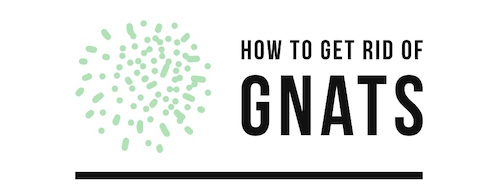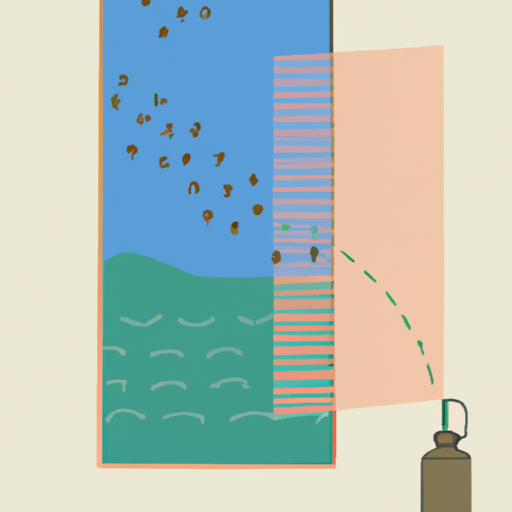How to Use Natural Remedies to Get Rid of Gnats Indoors
Gnats are small, pesky insects that can be a nuisance indoors. Fortunately, there are several natural remedies you can use to get rid of them.
The first step is to identify the source of the gnats. Gnats often come from decaying organic matter such as fruits and vegetables, so check for any rotting food in your kitchen or pantry. If you find any, discard it immediately and clean up any spills or messes that may have been caused by it.
Once you’ve identified the source of the gnats, you can start using natural remedies to get rid of them. One effective remedy is to make a mixture of apple cider vinegar and dish soap in a bowl and place it near where the gnats are congregating. The vinegar will attract them while the soap will trap them so they cannot escape.
Another remedy is to fill a shallow bowl with beer and place it near where the gnats are gathering; this will also attract them but instead of trapping them like with soap, they will drown in the beer instead. You should replace this solution every few days until all signs of gnat activity have ceased.
Finally, if these methods don’t work for you then try using essential oils such as peppermint oil or eucalyptus oil around areas where there is high activity from these pests; this should help repel them away from your home naturally without having to resort to chemical sprays or other harsh treatments that could be harmful for both humans and pets alike!
How to Identify the Source of Gnats in Your Home
Gnats are small, flying insects that can be a nuisance in the home. Identifying the source of gnats is essential for getting rid of them. Here are some steps to help you identify the source of gnats in your home:
1. Inspect your houseplants: Gnats often lay their eggs in soil, so inspect all houseplants for signs of infestation. Look for small white larvae or eggs on the surface or within the soil. If you find any, discard the plant and its soil immediately and replace it with fresh potting mix.
2. Check drains and garbage cans: Gnats may be attracted to standing water or food scraps in drains and garbage cans, so check these areas for signs of infestation such as larvae or adult gnats flying around them. Clean out any debris from drains and garbage cans regularly to prevent an infestation from occurring again.
3. Look around windowsills: Gnats may enter through open windows, so inspect window sills for signs of an infestation such as larvae or adult gnats flying around them. Make sure all windows are closed tightly when not in use to prevent further entry into your home by these pests.
4 . Examine outdoor areas: Gnat populations can increase outdoors due to decaying organic matter such as leaves, grass clippings, compost piles etc., so examine outdoor areas near your home for potential sources of infestations such as these materials which could attract gnat populations into your home if left unchecked .
By following these steps you should be able to identify where the source of gnat infestations is coming from within your home and take appropriate measures to get rid of them once and for all!
The Best Ways to Prevent Gnat Infestations Indoors
Gnat infestations indoors can be a nuisance and cause health concerns. To prevent gnat infestations, it is important to take proactive steps to reduce the risk of an infestation.
1. Keep food and garbage sealed: Gnats are attracted to food sources, so it is important to keep all food items sealed in airtight containers or bags. Additionally, make sure that all garbage cans have tight-fitting lids and are emptied regularly.
2. Clean up spills immediately: Any spilled liquids should be cleaned up as soon as possible since they can attract gnats. Wipe down counters and other surfaces with a damp cloth after preparing meals or snacks to remove any crumbs or residue that may attract gnats.
3. Reduce moisture levels: Gnats thrive in moist environments, so reducing the humidity levels in your home can help prevent an infestation from occurring or getting worse if one has already started. Use dehumidifiers in areas where there is excess moisture such as bathrooms and basements, and make sure that any leaks are fixed promptly to avoid standing water which could become a breeding ground for gnats.
4. Seal entry points: Check around windowsills, doors, vents, pipes etc for any cracks or gaps which could allow gnats into your home; these should be sealed with caulk or weatherstripping if necessary to prevent them from entering your home through these openings .
5 . Use insecticides : If you already have an infestation of gnats indoors , insecticides may be necessary . Look for products specifically designed for use against flying insects such as fruit flies , drain flies , fungus gnats , etc . Follow the instructions on the label carefully when using insecticides inside your home .
Tips for Cleaning and Sanitizing Your Home to Keep Gnats Away
1. Vacuum regularly: Vacuuming your home on a regular basis is one of the best ways to keep gnats away. Make sure to vacuum carpets, rugs, furniture, and other surfaces where gnats may be hiding.
2. Clean up spills and crumbs: Gnats are attracted to food sources, so it’s important to clean up any spills or crumbs that may have been left behind in your kitchen or dining area. Wipe down counters and tables with a damp cloth after meals and store food in airtight containers when not in use.
3. Dispose of garbage regularly: Garbage can also attract gnats, so make sure you dispose of it regularly outside your home or in sealed garbage cans with tight-fitting lids.
4. Use natural repellents: Natural repellents such as essential oils can help keep gnats away from your home without the use of harsh chemicals or pesticides that could be harmful to you and your family’s health. Try using lavender oil around windowsills and doorways for an effective natural repellent against gnats!
5 Sanitize surfaces: Sanitizing surfaces such as countertops, sinks, doorknobs, light switches etc., is another great way to keep gnats away from your home as they are attracted to dirt and grime build-up on these areas! Use a disinfectant spray or wipes on these surfaces at least once a week for maximum effectiveness against pesky pests like gnats!
What You Need To Know About Chemical Treatments for Getting Rid of Gnats Indoors
Gnats are small, pesky insects that can be a nuisance indoors. They are attracted to moist areas and feed on decaying organic matter, such as fruits and vegetables. Fortunately, there are several chemical treatments available for getting rid of gnats indoors.
One of the most common chemical treatments for getting rid of gnats is insecticides. Insecticides come in many forms, including aerosols, sprays, baits and dusts. Aerosol insecticides work by killing adult gnats on contact while sprays can be used to treat larger areas or hard-to-reach places where the insects may be hiding. Baits contain an attractant that lures the gnats into a poisoned food source while dusts can be used to treat cracks and crevices where the insects may hide or breed.
Another type of chemical treatment for getting rid of gnats is insect growth regulators (IGRs). IGRs work by disrupting the reproductive cycle of the insects so they cannot reproduce or lay eggs. This prevents future generations from emerging and helps reduce infestations over time.
It is important to read all labels carefully before using any type of chemical treatment for getting rid of gnats indoors as some products may not be safe for use around children or pets. Additionally, it is best to use multiple methods when treating an infestation as this will help ensure complete elimination of the pests from your home or business premises.

